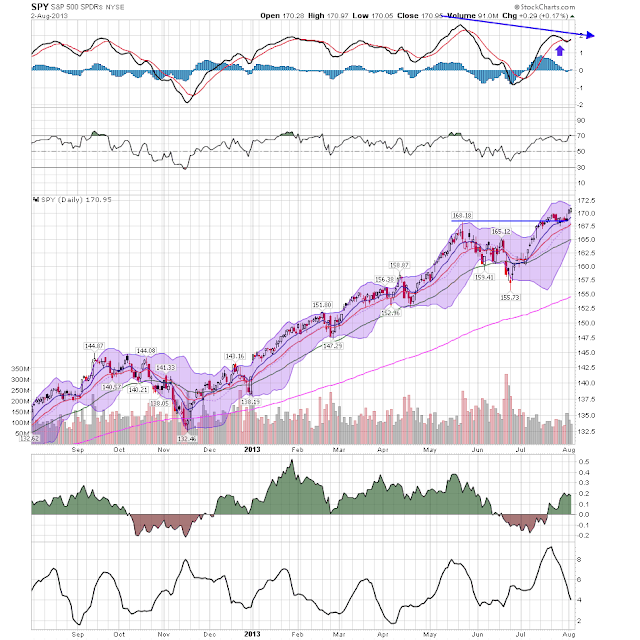- by New Deal democrat
This may have been the slowest week for monthly data ever. The only item of note was the ISM services report, which improved to 56.0.
So let's get right to this week's look at the high frequency weekly indicators. This is probably a good week to remind readers that the purpose of looking at these numbers is that they are as close to an up-to-the minute look at the economy as we can get. They can be noisy, but if there is an important turn in the economy, it will show up here before it shows up in the monthly numbers. For example, two years ago the Gallup Daily Consumer Spending report showed that consumers were continuing to spend during the debt ceiling debacle, despite the monthly numbers hitting an air pocket. The conclusion and the title are the last things I write, after I've recorded the numbers. And the post is designed so that the conclusion is after the numbers, so you can form your own opinion freely.
Anyway, let's start this week with conusmer spending, because Gallup consumer spending turns out to be the star of the show again.
Consumer spending
- ICSC +0.3% w/w +2.5% YoY
- Johnson Redbook +3.7% YoY
- Gallup daily consumer spending 14 day average at $102 up $19 YoY
Oil prices and usage
- Oil down -$0.97 to $105.97 w/w
- Gas $3.63 down -0.01 w/w
- Usage 4 week average YoY up +3.2%
Interest rates and credit spreads
- 5.32% BAA corporate bonds up +0.07%
- 2.64% 10 year treasury bonds also up +0.07%
- 2.68% credit spread between corporates and treasuries unchanged
Housing metrics
Mortgage applications from the Mortgage Bankers Association:
- +1% w/w purchase applications
- +8% YoY purchase applications
- unchanged% w/w refinance applications
Housing prices
- YoY this week +8.8%
Real estate loans, from the FRB H8 report:
- unchanged w/w
- +0.3% YoY
- +1.9% from its bottom
Money supply
M1
- +0.1% w/w
- +1.9% m/m
- +8.1% YoY Real M1
M2
- +0.4% w/w
- +1.2% m/m
- +5.2% YoY Real M2
Employment metrics
The American Staffing Association Index rose 1 to 96. It is up +3.2% YoY
Initial jobless claims
- 333,000 up 7,000
- 4 week average 335,500 down -5750
- $50.5 B for the first 6 days of August vs. $50.0 B last year, up +0.5 B or +1.0%
- $146.1 B for the last 20 reporting days vs. $133.4 B last year, up +12.7 B or +9.5%
Daily tax withholding has improved to the middle part of its YoY range compared with its YoY average comparison in the last 7 months. Initial claims remain within their recent range of between 325,000 to 375,000, and have flattened out just as they have in the last 3 springs and summers. The 4 week moving average, however, made a new post-recession low this week.
Transport
Railroad transport from the AAR
- -1200 carloads down -0.4% YoY
- +4600 carloads or +2.8% ex-coal
- +11,700 or +4.8% intermodal units
- +11,300 or +2.0% YoY total loads
- Harpex up 2 to 403
- Baltic Dry Index down -64 to 1061
Bank lending rates
- 0.22 TED spread down -0.02% w/w
- 0.185 LIBOR down -0.001% w/w
JoC ECRI Commodity prices
- down -0.03 to 123.76 w/w
- +3.91 YoY
Everything else was positive. Rail had a positive week, oil and gas prices were slightly lower, gas usage was higher, interest rate spreads remained at a 1 year plus low, house prices were very positive, bank rates were very positive, money supply remained positive, the 4 week average of initial jobless claims made a new post-recession low, temporary jobs have turned positive again, and most of all, consumer spending was strong, especially as measured by Gallup.
The American consumer is truly a wonder to behold. Have a nice weekend.





















































